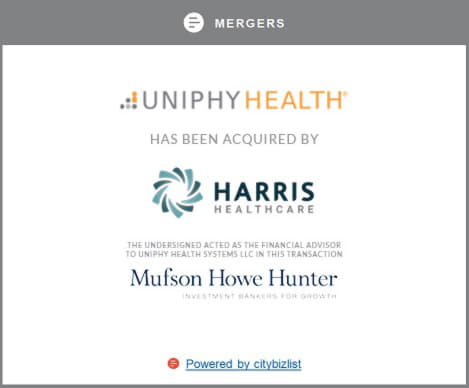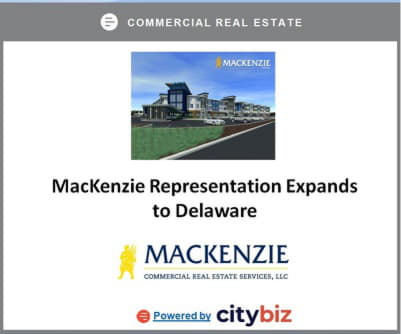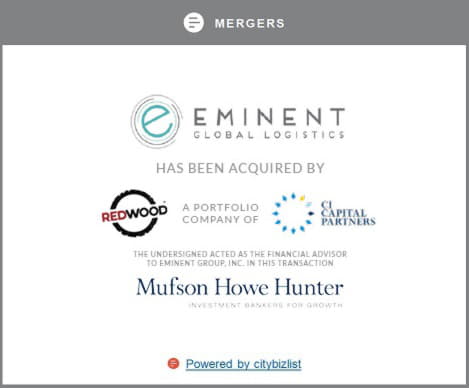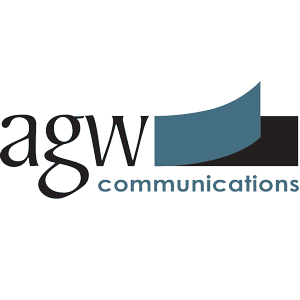MAREJ-Hosted Event Focused on Office, Retail, Mixed-Use and Industrial Sectors
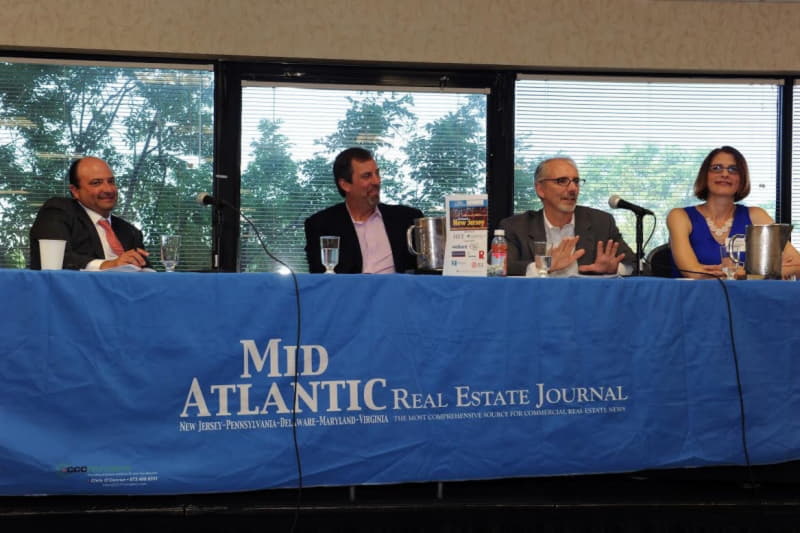
Richard Mirliss, Colliers International; Dennis McConnell, JLL; Paul Newman, Kimmerle Newman Architects; and Kristine Hurlbut, Denholtz Associates.
With New Jersey’s office vacancy rate hovering at around 24 percent, retaining and attracting tenants is top of mind for today’s commercial property owners. Repositioning decades-old buildings to meet tenants’ evolving needs and support a new generation of office worker has become more important than ever before, according to a panel of industry experts who recently participated in the Mid Atlantic Real Estate Journal’s (MAREJ) 3rd annual New Jersey Commercial Real Estate Forecast Summit.
A panel entitled, “Office Market Evaluation & Today’s Tenant Requirements,” was moderated by Dennis W. McConnell, executive vice-president of JLL. Panelists included Paul Newman, AIA, CID, partner and vice-president of Kimmerle Newman Architects; Richard Mirliss, executive managing director of Colliers International; and Kristine Hurlbut, senior vice-president of leasing at Denholtz Associates.
The morning event, which took place at the APA Hotel in Iselin, brought together more than 100 of the region’s top commercial real estate professionals, along with five panels of industry leaders representing the retail, mixed use, office, multifamily and industrial markets.
Today’s suburban office buildings – many of which were built in the 1980s – are in a state of transition, the panelists agreed. These assets are being reinvented with sophisticated amenities to bring a downtown urban feel – where everything is at a tenant’s fingertips – into suburbia.
“Smart office owners are thinking ahead,” said Newman. “They may have a building today that is almost fully rented. However, leases eventually expire and owners are looking at ways to retain these tenants. It goes beyond simple upgrades to ‘urbanizing’ the suburban office building and bringing what’s going on in New York to New Jersey. At Kimmerle Newman Architects, many of our corporate clients are asking for coffee and juice bars in the lobby space, open ceilings, fitness centers, polished concrete finishes, bike rooms, and rooftop decks and other expansive outdoor spaces.Everything we are doing is making these buildings cooler, hipper and designed with tenants’ needs in mind for years to come.”
And, tenants are willing to pay rents commensurate with the quality of these state-of-the-art assets, added Mirliss. “Tenants are seeking out modern, renovated buildings and occupancy levels in these buildings are in the 80-90 percent range. 300 Kimball Drive in Parsippany kicked off this trend about three or four years ago, taking a dated building and from top to bottom making it light, bright, modern and amenity rich.”
Mirliss also cited Overlook Corporate Center in Little Falls. “This is a building that’s a confluence of everything Paul talked about: five rooftop decks, accessible to public transportation, large common areas, juice and coffee bars, a fitness center, shared conference facilities – a complete live-work-play environment. When potential tenants walk in and see the results of an eight-figure renovation, it resonates with them and they are willing to pay the rent. But as a landlord, you have to be willing to pay to get there. Buildings that create more of an environment and a brand for themselves are the ones that are going to remain successful,” he said.
Architectural firms have actively been designing for the Millennial market for many years, but KNA has recently shifted their focus to start planning to accommodate the younger, Gen Z workforce. Looking ahead, that trend will continue, said Newman. “We will continue to see the usable square footage per person decline slightly due to an increasingly mobile workforce that can work from virtually anywhere, and often spends more time working remotely more than they do in the office. Building owners have to assess where technology is going and what these buildings will need. For the younger workforce, that’s what it’s all about,” he said.
Mirliss also attributes the New Jersey Economic Development Authority’s Grow NJ Assistance Program as a key driver for the state’s office market. Grow NJ is a job creation and retention incentive program that strengthens New Jersey's competitive edge against tax incentive programs in surrounding states. “If you look at every major transaction in the last 24 months, there’s usually an announcement about a Grow NJ Incentive attached to it,” he said, adding that the Garden State – particularly urban centers of Newark, Jersey City and Hoboken – will continue to attract New York City businesses.
“There’s not one specific industry attracted to New Jersey’s office market today. If you look at any multi-tenanted Class A office building in the state you will find everyone from legal and financial services to technology and accounting firms. In many ways New Jersey still is a derivative of New York City. A lot of tech companies are being priced out of Manhattan and in order to grow, expand and retain their labor they are coming to New Jersey. Tenants are willing to pay for space in a quality asset; if you deliver it they will come.”


